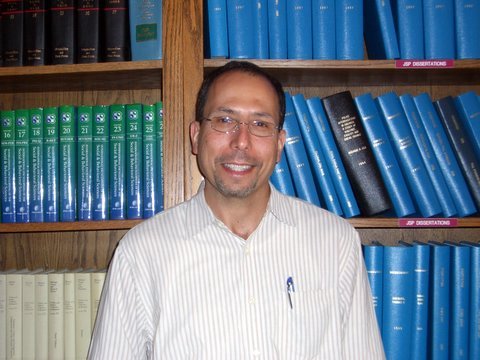In the recent dystopian film by Alfonso Cuaron, The Children of Men (2006), [read the New York Times review by Manohla Darghis] viewers are taken into “Bexhill Refugee Center” a massive detention facility for “illegal immigrants” in the United Kingdom. Located along a sea-coast (the film’s action perversely requires the characters to sneak into this facility in order to meet a ship that will carry them to safety), the detention center looks much like a conventional prison on the outside. It is surrounded by perimeters of razor wire and the detainees encounter a large staging area in which security personnel bustle about separating out some and loading others onto buses for transport deeper inside the facility. But once led off the buses, the detainees find themselves in what appears to be an extremely chaotic and impoverished third world city. The detainees find themselves surrounded by a swirl of hawkers offering lodgings and other kinds of assistance, for a price. The lodgings to which our protagonists are led, consists of a windowless room with a mattress, some buckets of water, and a few implements for preparing food. Some buildings retain markings of former functions, e.g., a bank, a water purification facility, but are now occupied by a deracinated aggregation of individuals and families from all over the world who have come to the UK as refugees (the rest of the world appears to have become one large failed state) only to be arrested as illegal immigrants, held in cages and transported to this detention center by a militarized “homeland security” force.
This dense and roiling city appears to be regulated mainly by local norms that can only be imagined, enforced by individual or small group violence (although later we see armed members of what appears to be an Islamic militia like those that dominate Gaza or Baghdad). The force of formal law and governmental control seems to end at the door of the buses in which the arriving detainees are transported, save for a recorded message broadcast in the entry area which urges refugees not to engage in terrorism, reminding them that the are guests of the UK and under its protection. But that reassuring message of sovereign promise appears to be utterly false. The uniformed personnel of homeland security only enter the city to repress an uprising, and when they do it is as a military phalanx complete with armored personnel carriers and tanks, to direct lethal force against armed militants and any other detainees who happen to be in the way (the reference to current conditions in the middle-east are inescapable).
While the Cuaron and his colleagues were clearly influenced by images coming out of Iraq and other suffering zones of the middle-east, the presentation of Bexhill fits perfectly into the political theorist Giorgio Agamben’s celebrated analysis in Homo Sacer of the concentration camp as the distinctive technology of late modern governance and social control. Inside Bexhill are packed refugees (pejoratively referred to as “fugees” by the hostile homeland security officials), persons who have no legal or political standing in the society. It is a space only of containment, with no promise of transformation, reformation, or restoration to any more desirable status. Indeed it is left unclear whether anyone is ever deported from Bexhill, or given a hearing on their refugee claims, or only die there (although it is not primarily a killing camp like Auschwitz).
The Bush Administation’s “war on terror,” particularly the wars in Afghanistan and Iraq, have generated all too many such horrifying imagines, especially the US controlled facilities at Abu Ghraib and in Guantanamo Bay, Cuba. A recent New York Times story by C.J.Chivers [read the story now] described the incarceration of alleged insurgents held by the Kurdish authorities in Northern Iraq and painted a similar picture of scores of men held in large group cells with little access to hygiene, exercise, and no work, recreation, or educational programs. Like the refugees in The Children of Men, the prisoners in all these facilities have no clear legal path to freedom, no clear way out detention, indeed, no clear future at all.
These new spaces of containment that have proliferated during the recent war, confront us with problems of classification and even description. Should we think of them as prisons (the media often uses this term) and their inmates as prisonsers? Some of the inmates are immigrants, others insurgents, others criminals, all stand in some form of illegality (or non legality). These questions are all the more pressing because of the massive expansion of conventional prisons for convicted criminals in the US (and to a somewhat lesser degree in the UK and many other societies). In what ways do prisons for criminals remain distinct from "camps" "centers" and other custodial facilities set up to contain emerging subjects of state control including illegal immigrants and unlawful combatants? How will the rise of these new institutions of confinement alter the three century long tradition of prisons as spaces of control for lawfully convicted criminals?
In a series of postings during January I hope to offer some preliminary analysis of these vital questions (please share your thoughts and comments).


1 Comments:
Hi:
You might want to consider joining the carceral/detention practices of the "War on Terror" with those of ICE's Immigration Detention Centers. Do you think that the legal structure behind the immigration detention centers and the disavowal of detained immigrants' rights might be similarly illuminated by Agamben?
Here are some stories about some detention centers in Texas which you might find interesting, and/or useful:
http://www.statesman.com/search/content/news/stories/local/12/15/15immigprison.html
http://www.texasobserver.org/article.php?aid=2193
Post a Comment
<< Home